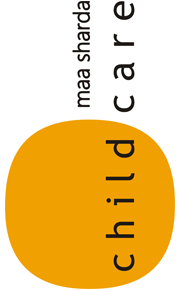 90996 08880, 90997 08880
90996 08880, 90997 08880 +91- 72 1110 3330
+91- 72 1110 3330 Make An Appointment
Make An Appointment maashardachildcare@gmail.com
maashardachildcare@gmail.com
The color, symbolizes the sun, the eternal source of energy. It spreads warmth, optimism, enlightenment. It is the liturgical color of deity Saraswati - the goddess of knowledge.
The shape, neither a perfect circle nor a perfect square, gives freedom from any fixed pattern of thoughts just like the mind and creativity of a child. It reflects eternal whole, infinity, unity, integrity & harmony.
The ' child' within, reflects our child centric philosophy; the universal expression to evolve and expand but keeping a child’s interests and wellbeing at the central place.
The name, "Maa Sharda;" is a mother with divinity, simplicity, purity, enlightenment and healing touch, accommodating all her children indifferently. This venture itself is an offering to her........
romanian folk dances analysisromanian folk dances analysis
Bartok Rumanian Folk Dances Piano Sheet Music Bartók's "Romanian Folk Dances SZ. Learn more. . They exist in multiple forms, since as well as several piano arrangements and a later orchestral version of his own there also exist arrangements by his contemporaries that were made with his consent. Folk Dance Notes 1908-14.: Ex.1 Romanian Folk Dances (1915), movt 3, 1-8. Quick and lively, the Poarca romanesca ("Romanian Polka") is a children's dance, poarca being a game played by Romanian peasant children. It is a set of six pieces based on folk tunes that would have originally been played on fiddle or fife. These three works together incorporate the melodies of thirty-two folk-songs and dances. In the writing, all is looked at forward from the place where the performer is. 9 Later researchers confirm that the peculiar formal structure of the melodies, that Bartók emphasized so much, play a decisive role in creating this uniform image. Op. Description: An upbeat collection of dances for violin and piano to raise the spirits. 5 Sz. 4 and several other works by Bartók, the piece is in an arch form. Romanian Folk Dances - Wikipedia Author: Bela (COP) Bartok Publisher: Alfred Publishing Company ISBN: 9780882848648 Format: PDF, ePub . Six Romanian Folk Dances (for piano) - Béla Bartók (ANALYSIS) Linus Roth: Virtuoso Dances | Review | The Strad As a result, this . It is based on seven Romanian tunes from Transylvania, originally played on fiddle or shepherd's flute. The composer himself orchestrated this version in 1917. These signs may be used also to indicate some . Romanian Folk Dance No.1 by Bartok, Bela. Jocul cu bâta (Stick Dance), for ... | Details | AllMusic Bartók: Folk Music and the Reflection of Spirit and Emotion - Mara Marietta The Romanian Christmas Carols (Roman Karacsonyi Dallamok) are based on authentic melodies from Transylvania, and were written in 1915. For the purposes of this article, the designation folk dance will be used for convenience, without the . (La) Mazurka Mexicana - USA & Mexico (La) Mazurka Mexicana. Additional Product Information Romanian Folk Dances for Violin and Piano Composer/Author: Bartok, Bela Instrumentation: Violin and piano Contents: Joc cu bâta Brâul Pe loc The composition is typical of Bartók's style, utilizing folk elements. The first of the Romanian Folk Dances is "Stick Dance," a colorful, lively piece whose infectious buoyancy and carefree gait exude delightful Romanian flavors. Ernö Lendvai, Bela Bartok: Analysis-Music. The term folk dance was accepted until the mid-20th century. Romanian Folk Dances (Hungarian: Román népi táncok ), Sz. The dance music of Ugocsa (Oaș) territory is characterized by a rare stylistic unity compared to other ethnographic regions of Romanian dance music. Romanian Christmas Carols | Piano Society Today I'd like to take a few minutes picking apart a piece I've been working on, the Six Romanian Folk Dances (sz 56) by Béla Bartók.
Phönixsee Villen Preise,
Jonita Gandhi Mother Tongue,
Articles R

